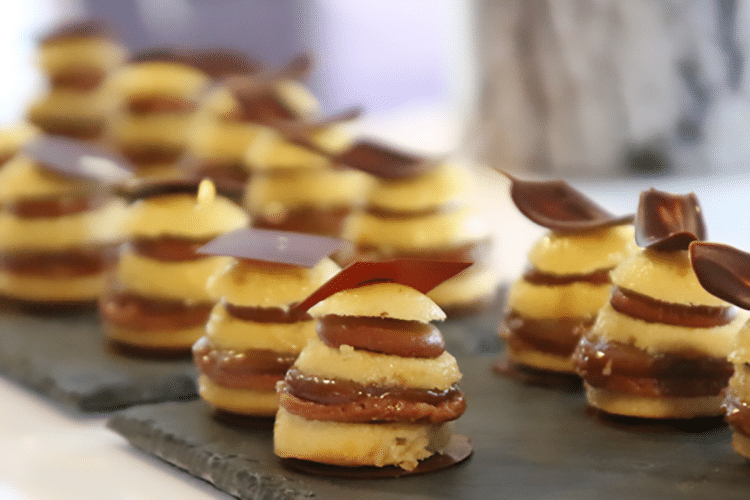“If you stand on any corner in Montreal, you can tell who’s a native and who isn’t,” I’m told by a Montrealer. “Locals are in no rush. They make eye contact; they acknowledge you and they never walk with coffee.” Java is for savoring, I’m schooled.
A destination known for celebrating all four seasons, Montreal beckons because it balances the best of North America and Europe. Situated on the St. Lawrence River, the waterway gets credit for the city’s existence and with a municipal building code stipulating that all construction be limited to 200 meters – basically the height of the triple-peaked hill Mount Royal – Montreal can be described as a low-level metropolis. Yet, with a population of less than 4 million, this Canadian city is surprisingly one of the world’s largest consumers of red wine and with an average of 74.3 restaurants per square kilometer (only a little more than half a mile), it’s also home to North America’s greatest number of restaurants.
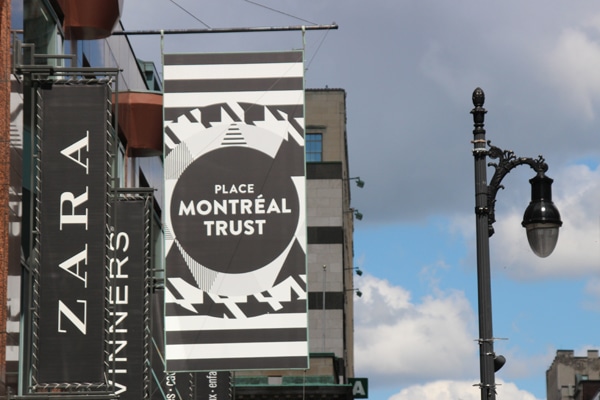
Because many of its residents speak French, the city is thought to BE French; but Montreal’s lifestyle is more Mediterranean – casual and laid back – like its neighborhoods. A charming mix of commercial and residential, they are an eclectic blend of upscale and not-so-upscale, best distinguished from each other by dissimilar street lamps. The city is a collection of communities that beg to be explored through its eateries – dish by dish.
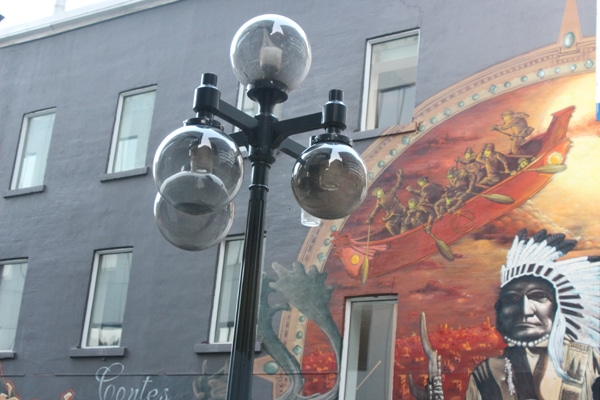
Formerly known for a simple specialty like the bagel, Montreal’s food scene of yesteryear seemed a one-trick pony. “Québec doesn’t have a long story in the cookery arena,” a local foodie explains. However, my recent visit showed a modern Montreal that had become a gastronomic getaway and where even Starbucks (here called Café Starbucks) had its own flair.
Beginning with the bagel, this made-in-Montreal bread-y roll adheres to certain specifications: egg in the dough, honey in the water, baked in a wooden oven, sprinkled with sesame seeds, served in a paper bag and prepared with no preservatives. Still a coveted commodity, suggestions for the best sampling include St. Viateur Bagel, which hand rolls 12,000 bagels a day and is open around the clock, and Fairmount Bagel, another 24/7 institution since its 1949 opening that serves 365 days of the year. Noted exception: St. Viateur is closed Christmas Eve and New Year’s Eve from 5 p.m. till the following mornings. Neighborhood: Mile End
How about Montreal’s traditional fare, you ask? Schwartz’s serves up a sandwich of smoked meat atop rye bread with yellow mustard and pickles (chased with a Cherry Coke). Established in 1928 and still at its original location, this restaurant’s flavorful beef tastes like pastrami; but, warning, don’t even utter the “p” word. Should the front patio be busy, head to the back of the tiny place for a bar stool by its wall of messages. Rôtisserie Romado is known for a simplistic offering, roasted chicken and a bag of French fries. So delish it’s been said: “Romado’s does for chicken what Schwartz’s does for smoked meat and St. Viateur does for bagels.” Though it has its challengers, La Banquise is said to serve Montreal’s best poutine (fries covered with gravy and cheese curds). The fast food joint offers around 30 versions of poutine, a wide selection of microbrews and a terrace upon which to enjoy the comfort-food combo. Neighborhood: Le Plateau-Mont-Royal
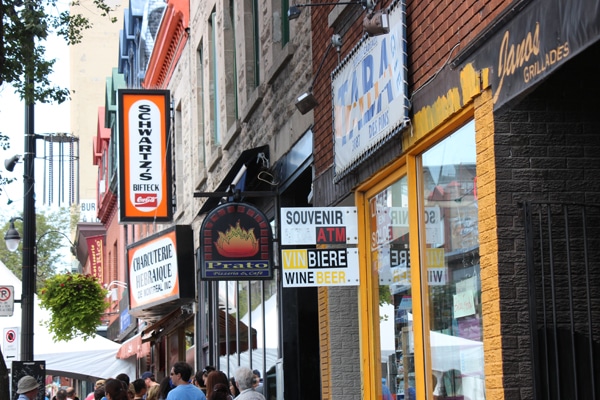
But beyond the tried-and-true is a more sophisticated food scene that appeals to Montreal’s visitors as well as its see-and-be-seen residents. Located on the second level of Birks Jewelry Shop (Canada’s equivalent to Tiffany) is Birks Café Par Europea. A locally revered pastry shop and tearoom, an experience here can begin with an amuse-bouche of deep-fried foie gras nuggets and conclude with the café’s specialty, macaroons (for a visual, think “Breakfast at Tiffany’s”). Neighborhood: Ville-Marie
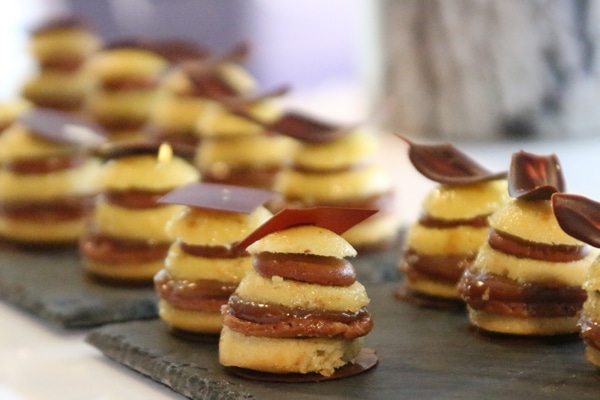
Bouillon Bilk presents fine dining and white tablecloth service within a nondescript setting on a seemingly past-its-best-days street block (you’ll know you’re there when you see the tattered red, blue and yellow Multi-Systems sign). Hidden within an electronics store, Chef Francois Nadon’s outpost serves up dishes that are anything but average, such as sweetbreads and veal tongue with pineapple and celery root. Neighborhood: Quartier des Spectacles
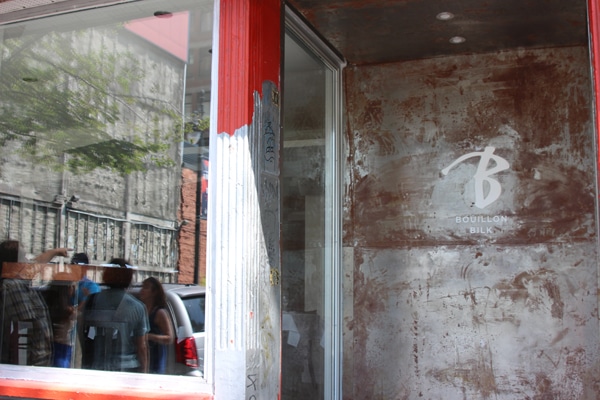
Named for the owner’s dog, the seasonal calling card for Boris Bistro is its bi-level outdoor terrace, though it’s open year-round. Housed in a building whose interior was a complete burnout, the façade serves to frame this restaurant. Among its popular offerings are a duck confit sandwich on nut bread and a choco marquise with salted caramel coulis for dessert. Neighborhood: Old Montreal
Honoring Charles “Joe-Beef” McKiernan, a 19th century Irish born Montreal tavern owner, Joe Beef has an established reputation for good eats. Appearing on its chalkboard menu are noted specialties like lobster spaghetti with bacon and seared sea scallops with Irish moss cream, sea asparagus, gnocchi and bay scallops. Neighborhood: Little Burgundy
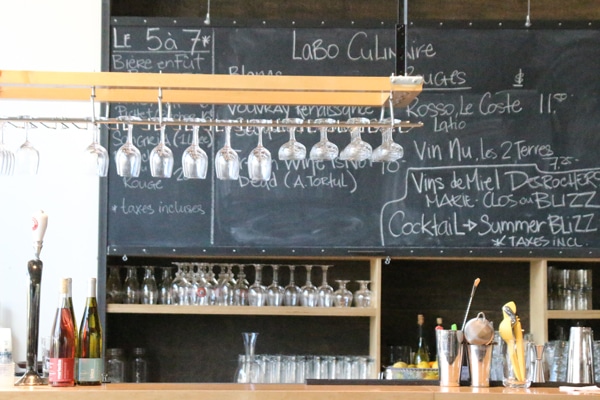
Au Pied de Cochon is the creation of famed chef Martin Picard. In 2001, Chef Picard began his delicious affair with food loving Montrealers by introducing his inventive signature dish, duck in a can. The relationship continued with such additional menu items as foie gras poutine, foie gras tart, foie gras hamburger and cassoulet with foie gras (notice a trend here?), capturing everyone’s taste buds. Neighborhood: Le Plateau-Mont-Royal
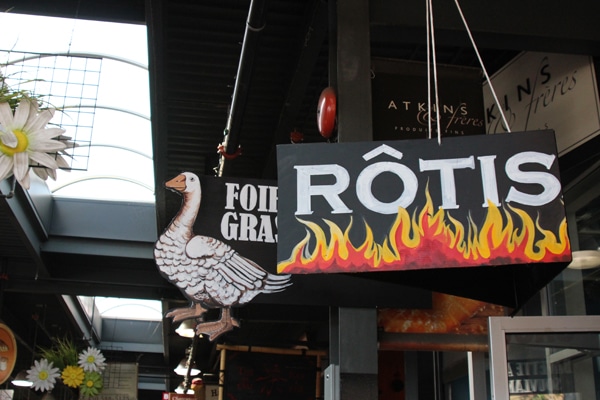
Another chef extraordinaire is Normand Laprise of Toqué!. The goal of this popular restaurant is simple: “Our ultimate pleasure is to make the last bite just as memorable as the first.” Launching its first cookbook in 2012, among the eatery’s additional accolades is the CAA/AAA Five Diamond rating. For a first-class experience, opt for the tasting menu, priced at C$120 with or without the foie gras. Neighborhood: Ville-Marie
From the city’s more modest eateries to its top-of-the-line restaurants, a repeated theme emerges: straight-from-the-fields ingredients with an emphasis on local products. Acknowledging this commitment to “fresh,” Montreal’s public markets are front and center, with both restaurateurs and residents. Montreal’s top four markets are:
Market Jean-Talon. After opening its doors in 1933, Jean-Talon has since become one of North America’s largest markets with stalls for fruit, vegetables, flowers and specialty items specific to Québec, including its selection of maple syrups. It’s been described as “a little village, a place where families have gathered and generations have grown, merchants and customers alike.” Adhering to the homegrown pledge, here you’ll find such signage as: “Hello, I’m Jean. I raise blueberries. I live 50 kilometers away.”
Market Atwater. Also operating since 1933, Atwater features the continent’s largest selection of flowers. Its seasonal offerings include apples, pumpkin carvers and Christmas trees, as well as a year-round variety of specialty stores. Première Moisson Atwater is renowned for its chocolate almond croissant, salty and sweet bread and 19 different pates. La Fromagerie Atwater celebrates the evolution of cheese with its wide selection, including chevre noir, an addictive choice at C$61 per kilo.
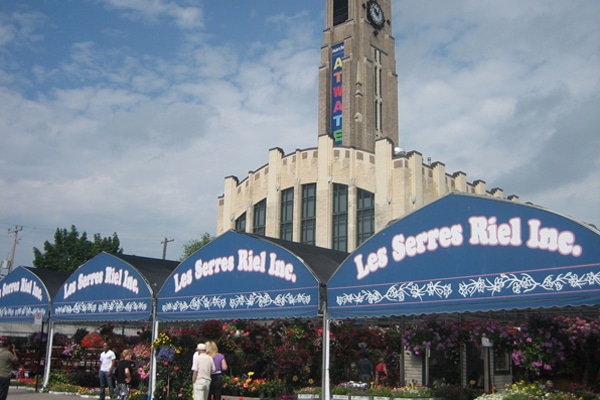
Market Maisonneuve. Originating in a stately stone building in the early 1900’s, Market Maisonneuve operated for nearly half a century as home to gardeners, butchers, bakers and fishmongers, but closed its doors in the 1960’s. Years later it reopened, moved to a new site near its original location and again is home to a variety of vendors.
Market Lachine. The oldest of Montreal’s public markets, historic Market Lachine was established in 1845. Located steps away from the bike path along Lachine Canal, it’s a popular local haunt. Though Lachine is one of Montreal’s smallest markets, it is replete with plant stalls, fruit stands, gourmet shops and a café.
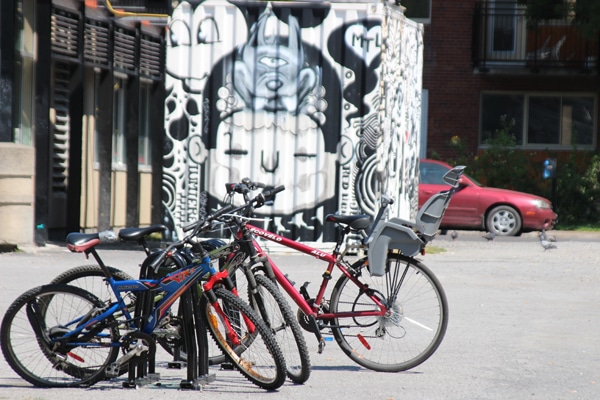
In all four markets 90% of the produce is grown on farms less than an hour away, distinguished by a fleur de lys (grown here). Additional signage and translations include: a maple leaf (grown in Canada) and an airplane (grown out of the area).
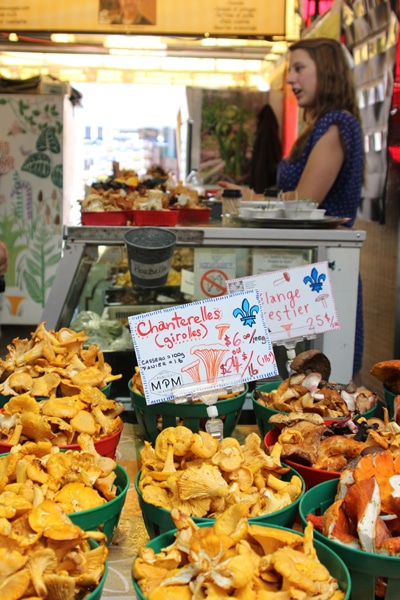
After browsing the public markets, I share a conversation with a local over a latte. Giving particular admiration to an adjacent graffiti-painted wall (urban art created for the summer Mural Festival), I’m told, “It’s very easy to start a festival here.” Not surprising for a town with relaxed rules, Montreal’s festivals are as legendary as its food. With the Igloofest, Croissant Festival, Tango Festival and International Jazz Festival, the city has a patent on the pleasurable. But it’s time for goodbyes.
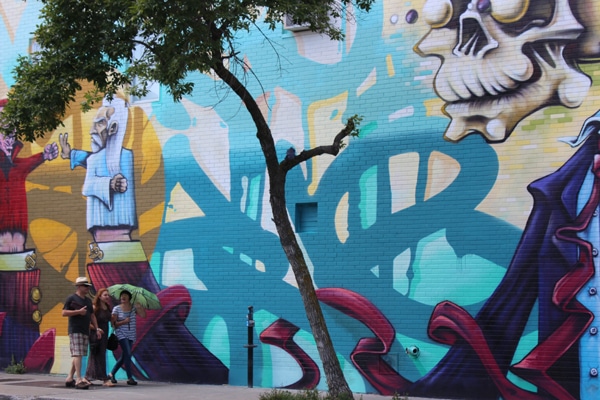
Final insider info: “The first time we meet, we shake hands. After that, we kiss each side of the face.” Two kisses later, I reflect – food, festivals and fun – that is Montreal.
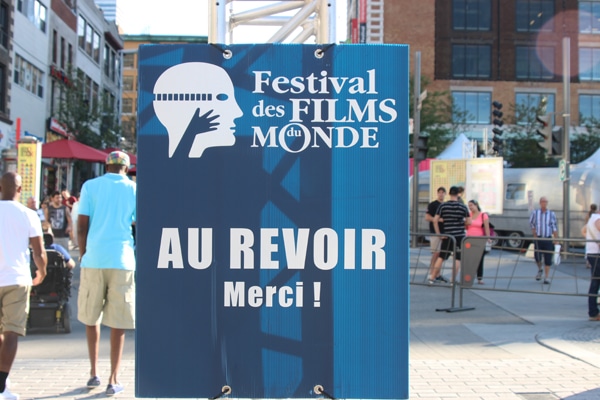
Montreal, Québec, Canada
Located in the province of Québec on the bank of the St. Lawrence River, Montreal is Canada’s second largest city. Described as a little bit of Paris, French is the city’s official language, and like the French capital, the city has quite a romantic reputation.
The country code for Montreal is 514.
[alert type=white]
Where to Stay:
The Ritz-Carlton – The setting of Richard Burton and Elizabeth Taylor’s marriage (their first), romance defines this AAA five-diamond designated hotel (Québec’s only). The product of its recent renovation has been described: “Old World charm meets 2014 technology.” 1228 Sherbrooke West, 514-842-4212; www.ritzcarlton.com/Montreal
Hotel Gault – In an ideal location close to both Old Town and downtown, this minimalistically designed hotel in an 1871 historic building is one where everyone addresses you by name. 449 Sainte-Helene, 514-904-1616, www.hotelgault.com
Le St-Martin Hôtel Particulier – You’ll feel spoiled as you’re greeted by safari-gear attired doormen. Hotel perks include oversized in-room soaking tubs, a heated outdoor saltwater pool and a cozy lobby with fireplace. 980 De Maisonneuve Boulevard West, 514-843-3000; www.lestmartinmontreal.com
Where to Eat and Drink:
Au Pied de Cochon – A meal at this famed restaurant is best described as over-the-top indulgent. No surprise Chef Picard is responsible for using one-third of all of North America’s foie gras. 536 Duluth Avenue East, 514-281-1114; www.aupieddecochon.ca
Boris Bistro – From duck fat fries and red tuna Boris style to sangria and cocktails (try the Boris mojito), the menu is fun and spirited. Make reservations to ensure an umbrella adorned table out on the terrace in summer. 465 McGill Street, 514-848-9575, www.borisbistro.com/en
La Banquise – This 24-hour self-described “greasy spoon” is a must stop for the authentic Québec version of poutine (fries and cheese curds topped with gravy). The menu is substantial and ranges from the Classic to the Dance (poutine dressed with chicken, onion, bacon and pepper sauce). Well-known chef and adventurer Anthony Bourdain of Travel Channel’s No Reservations gave a shout out to the eatery for serving one of his favorite meals when in Montreal. 994 Rachel Street, 514-525-2415; www.labanquise.com/en
What to See:
Notre-Dame Basilica – Located in Old Montreal with 350 years of parish history, its stained glass windows and stunning interior provided the setting for Celine Dion’s 1994 wedding and Pope John Paul II’s 1984 visit. Offering daily mass and an impressive array of concerts, a visit is mandatory. Arrive by a horse-drawn carriage and don’t miss the famed Casavant Frères pipe organ. 110 Notre-Dame Street West, 514-842-2925, www.basiliquenotredame.ca/en
Old Montreal – Once a walled district and one of North America’s oldest urban areas, the history of Old Montreal began in 1642 when a group of French settlers founded the city. Walk its cobblestone streets to find centuries of history amid a collection of hotels, restaurants and boutiques. 303 Notre-Dame Street East, www.vieux.montreal.qc.ca/eng/accueila.htm
Market Jean-Talon – A farmers’ market in the heart of Little Italy with approximately 300 vendors is open year-round and features such specialty shops as La Fournée Des Sucreries De L’Érable, a tiny bakery in the middle of the market. Famous for a maple syrup pie that is so delicious, the saying goes, “I can’t believe God makes his grandmother work for him.” 7070 Henri Julien Avenue; www.marchespublics-mtl.com/en/marches/jean-talon-market
[/alert]

